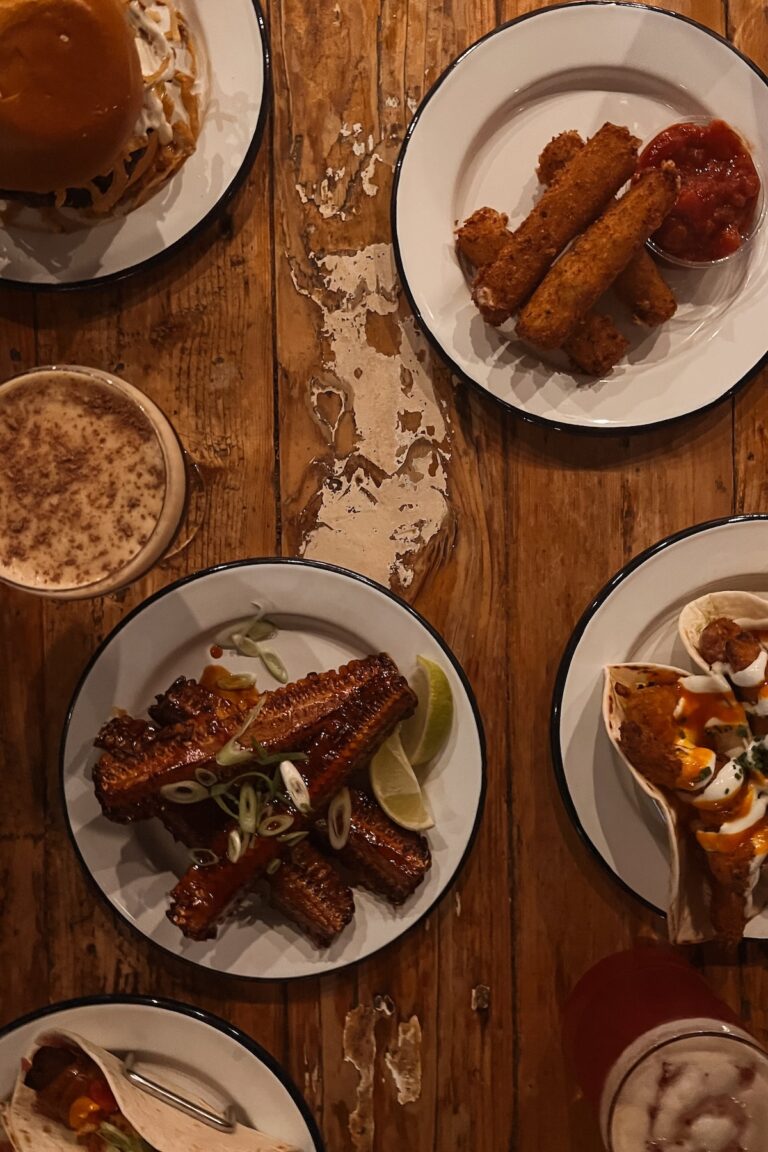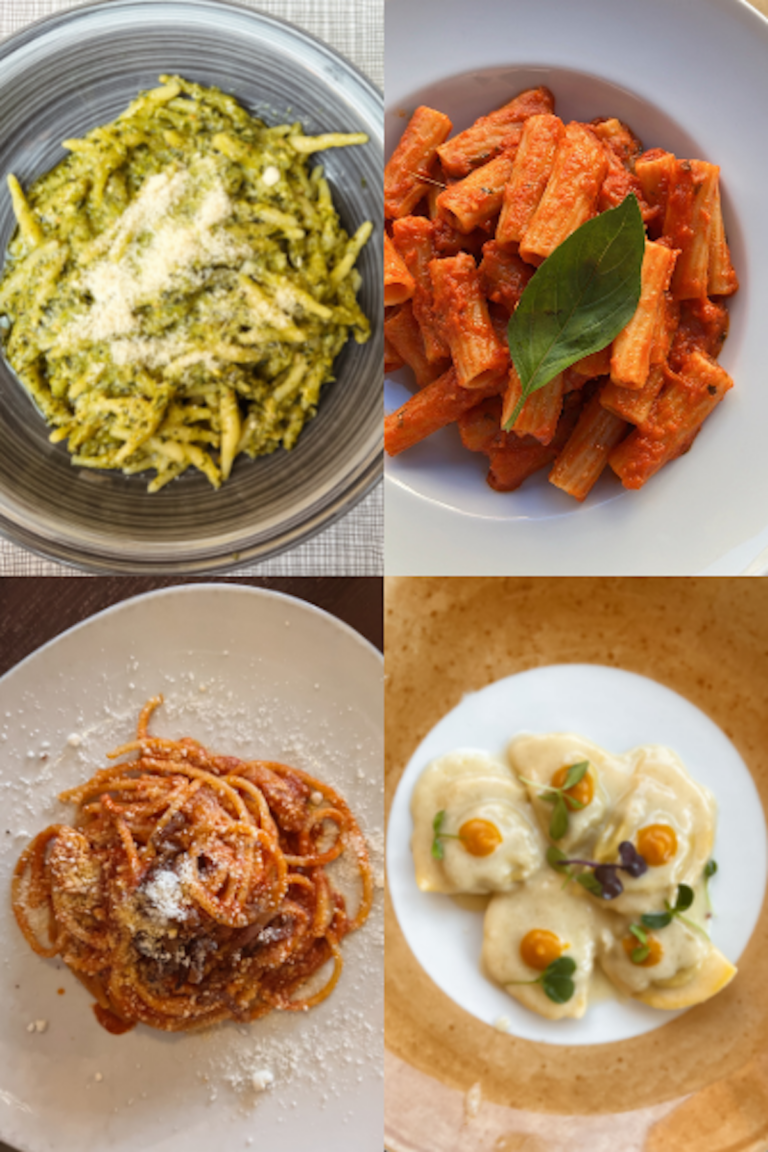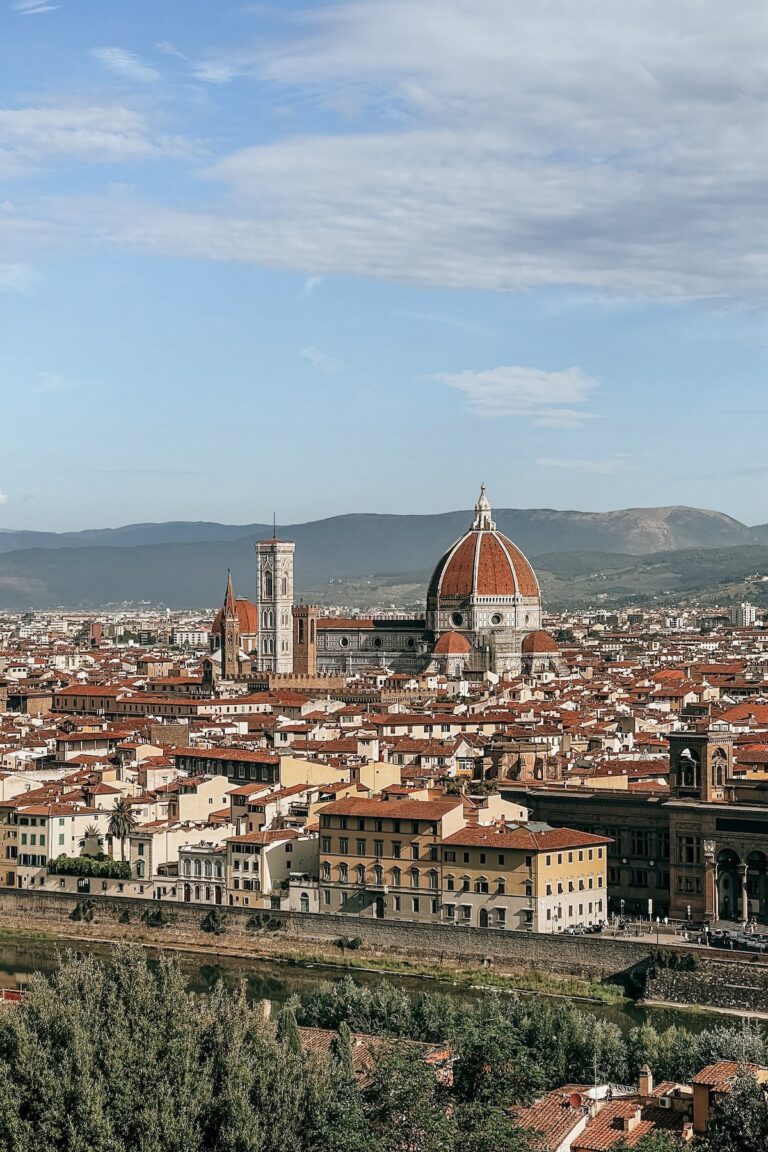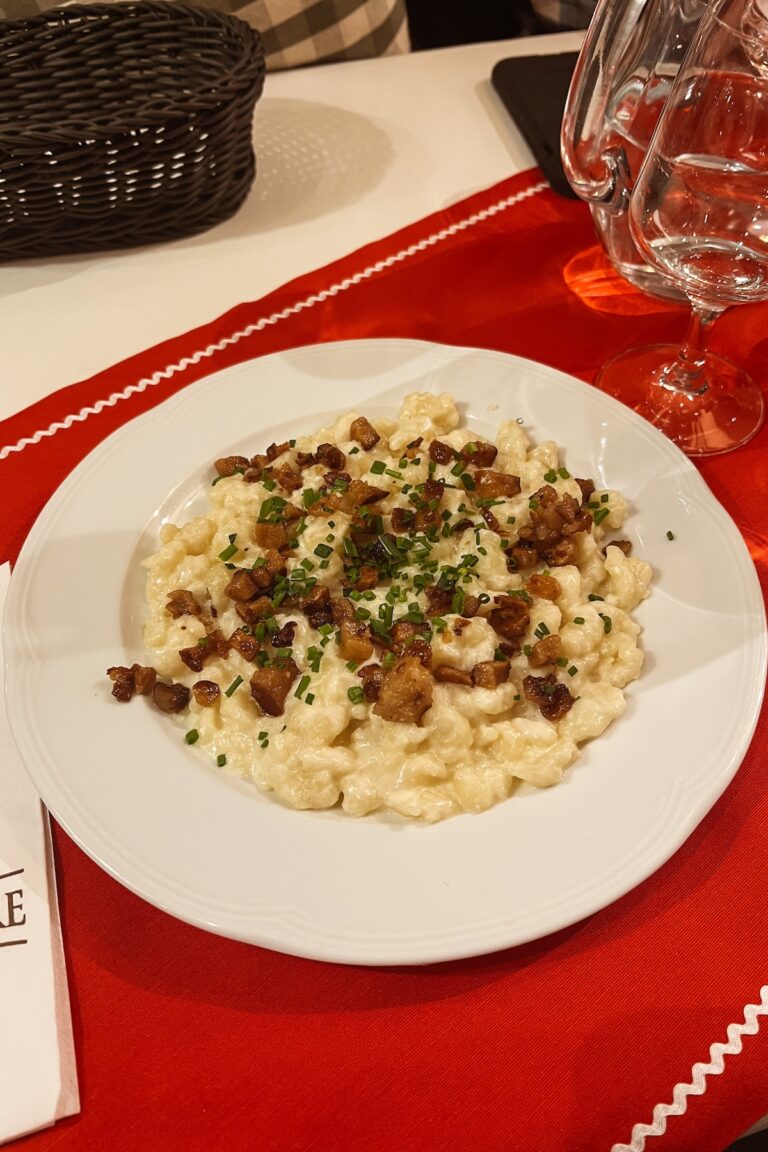How to Navigate Dining in Italy as a Tourist
Dining in a new country can be intimidating, especially when you don’t speak the language and aren’t totally familiar with the culture. I’m as obsessed with Italian food as the next person, but even though I was absolutely ecstatic to actually be traveling to Italy and eating authentic cuisine straight from the source, I was still pretty nervous about their dining culture–what if I couldn’t read the menu? Do people actually not tip, or will I look like a jerk if I don’t? What about those little shots they give you after dinner? How late am I gonna have to stay out?
Turns out, it wasn’t anything to be nervous about. Yes, there are definitely etiquette tips and quirks about Italian dining that you should be aware of before traveling to Italy, but there isn’t a strict regiment to follow like the internet had made it seem. In our 3 months traveling around Italy, I think we’ve gotten the hang of dining out without making fools of ourselves, and it’s way easier than you might think.
————————
THINGS TO KEEP IN MIND
There are definitely differences in Italian dining culture compared to the States, so here are a few things you should definitely be aware of before you head to that famous trattoria in Florence you’ve been looking up for weeks.
COVER CHARGES (COPERTO)
Restaurants in Italy almost always have a cover charge for sitting down at a table. The fee is usually around €2.50 per person, and is always included in the bill (you’ll see it written as “coperto” on the receipt). This is not equivalent to a tip; it essentially covers the place you’re taking at the table, which includes the silverware, linens, dishes, etc. that need washing after you leave. This also usually doesn’t include bread or water, which can be tricky to get used to as an American. If your waiter brings you bread without you ordering it then it’s included in the cover charge, but I’ve never been offered or served water here without ordering it (more on that later).
ITALIAN MENUS
Your menu will probably be in Italian with an English translation underneath, but lots of restaurants have fully Italian menus. This isn’t super hard to get used to if you know the basic translation for meats or the different types of pasta that are commonly served (which you can read here!), but when all else fails, just use Google Translate. The Italian menu structure is also a bit different from the US, which I’ll talk about more below.
MAKE RESERVATIONS
This one can seem either obvious or unnecessary, depending on how you typically dine out. If you’re a reservation-maker regardless of where you go, this is a no-brainer and will be easy for you to remember. If you typically wing it and walk up to any restaurant hoping to find a table, this isn’t always going to work in Italy. If there’s a spot you really want to try out, just go ahead and make the reservation as early in advance as possible. It helps if you can spend a few days walking through the city around dinner time and figuring out which places are always packed and which ones typically can take walk-ins, but the safe bet is always to make a reservation if you’re going somewhere other than a sandwich shop or pizza place. Most restaurants have online booking now anyway, so it’s super easy and often can be done the morning of!
SPECIFIC MENU ITEMS
A few things to note about certain items on Italian menus–pizzas are always personal (no matter how big), and they won’t come pre-cut. Prepare to cut it up yourself with your fork and knife, and prepare to eat the whole thing! You also won’t find chicken or large “meats with pasta” dishes in Italy; seafood pasta is one thing, but you won’t find chicken on top of a plate of pasta here. Chicken & pasta dishes are very Americanized versions of Italian dishes, and unless you’re at a super touristy spot, you won’t find them anywhere. Some big tourist trap items to avoid are Fettuccini Alfredo, chicken Alfredo, chicken parmesan, etc.
LEARN THE BASICS
You don’t have to learn the entirety of the Italian language to dine out in Italy, but it helps to know your basic greetings: buongiorno, buonasera, ciao, per favore, grazie, etc. To ask for the bill (which you’ll actively have to wave down a server for), a simple “il conto, per favore” does the trick! It makes a big difference when you’re polite and make an effort to speak to staff in their language rather than sitting down and immediately demanding things in English (which I’ve seen and been embarrassed by more than once here).
Now that we’ve got some basics down, let’s dive into the specifics!
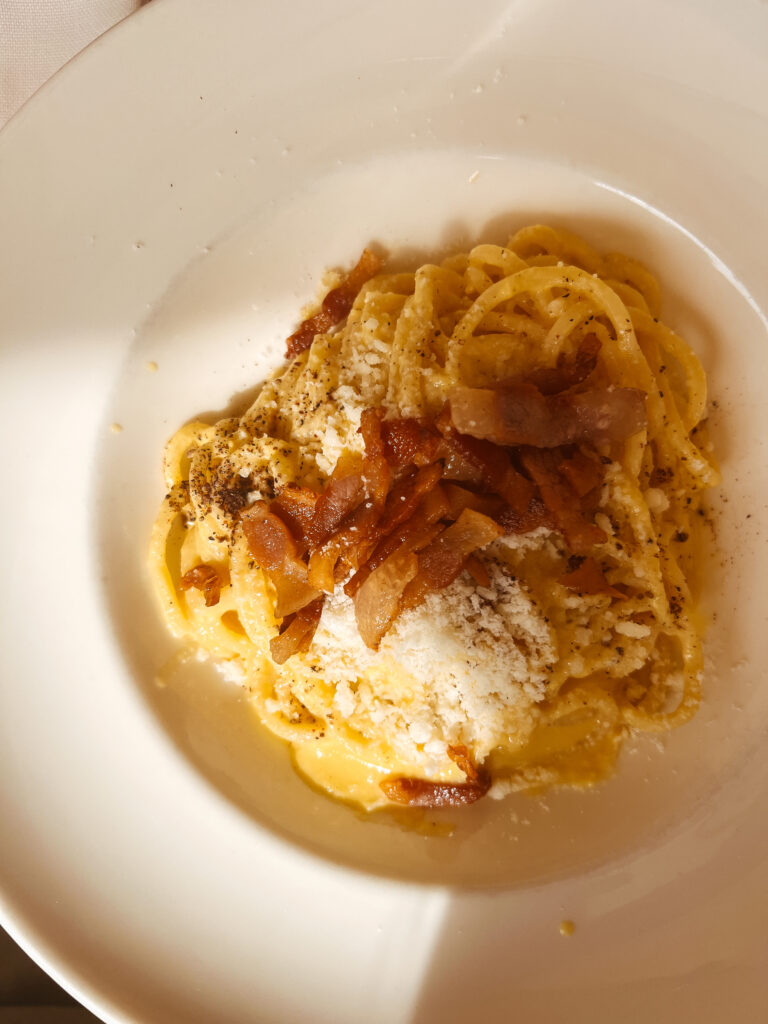
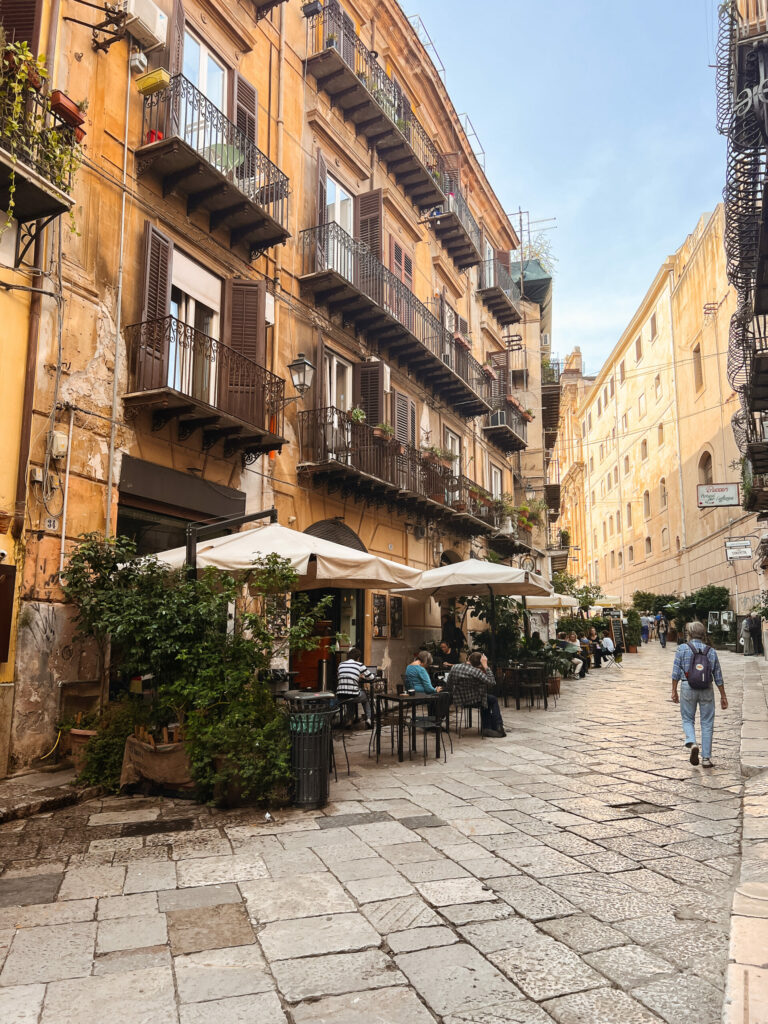
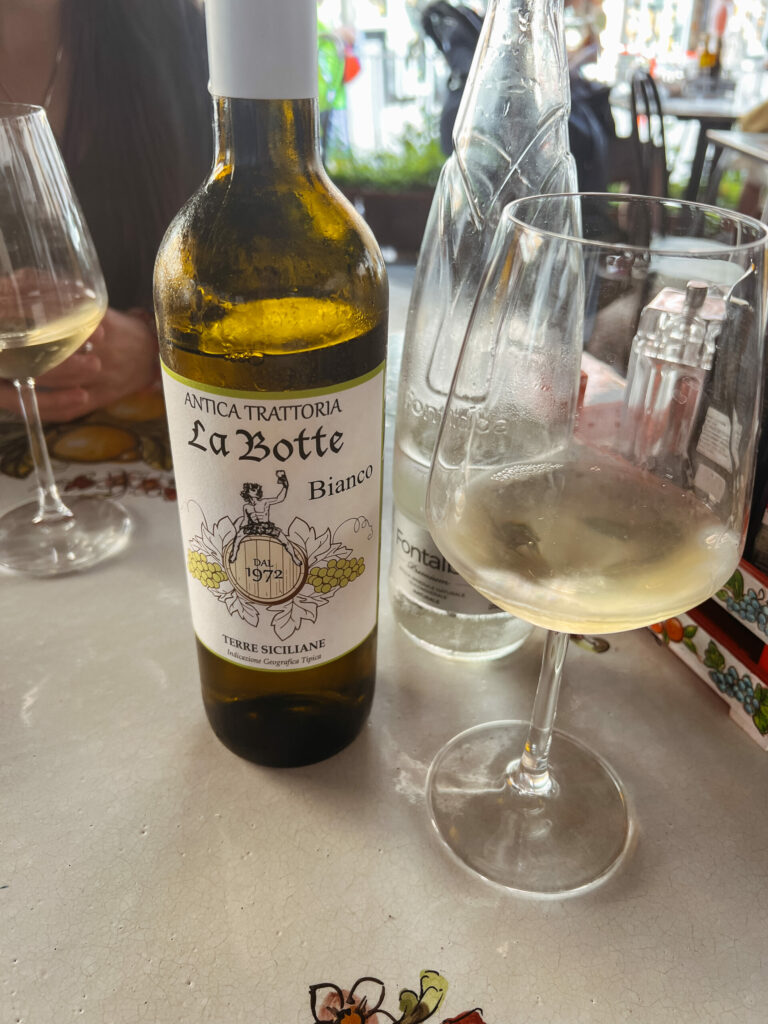
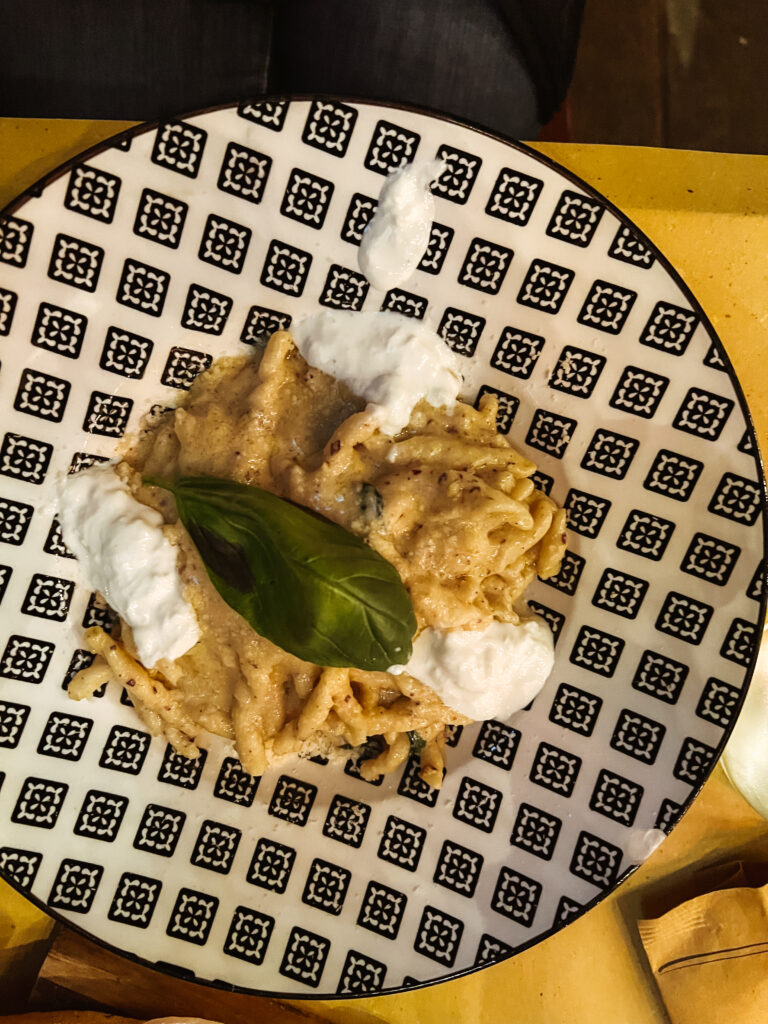
DINING HOURS
One thing that’s been interesting to get used to in Italy is the different dining hours – people in the US definitely eat much earlier there than they do in Italy. A typical dinner time in the US is anywhere from 4:30-7PM, but in Italy, restaurants aren’t even reopened until 7 or 7:30 at the earliest. It was interesting to get used to the differences, but also to understand why Italians do things so differently; back home, we just always ate dinner around 6PM because parents would get home from their 9-5 and immediately start making dinner or gather the family to drive to a restaurant. Dinner starts after the workday in America. In Italy, their work revolves more around their mealtimes and leisure time, rather than the other way around. There isn’t really the same 9-5 culture here that we have in the US, so people are able to spend longer times at meals, start their days later in the morning, and enjoy meals as family affairs rather than quick bites or special occasions.
Long story short, in Italy, bars and cafes open around 8-9AM, at least half of the restaurants close from 3-7PM, and for dinner, you’ll most often see restaurants open from 7:30PM-onward. Get used to staying out late and sleeping in a little more if you’re taking a trip here!
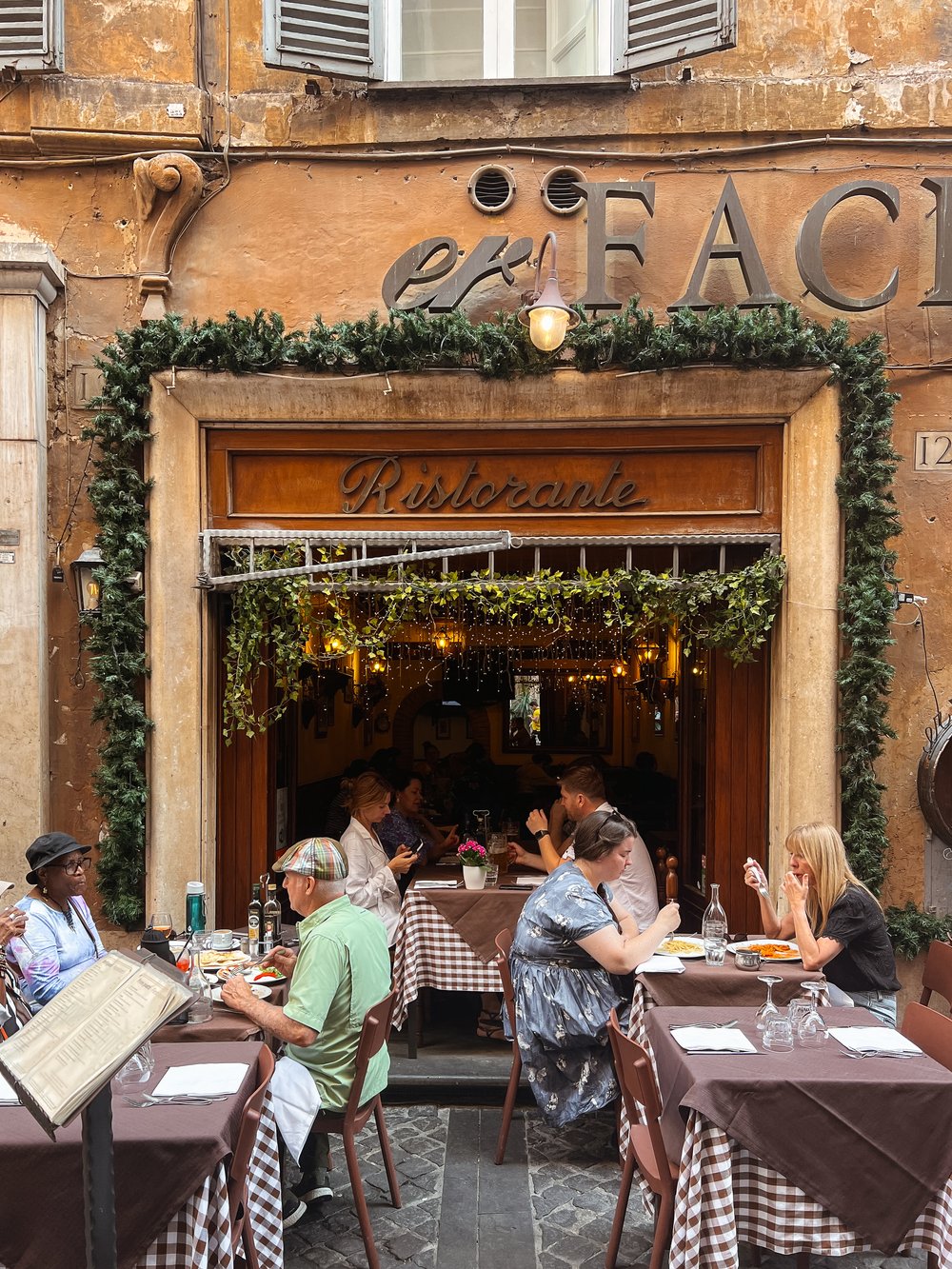
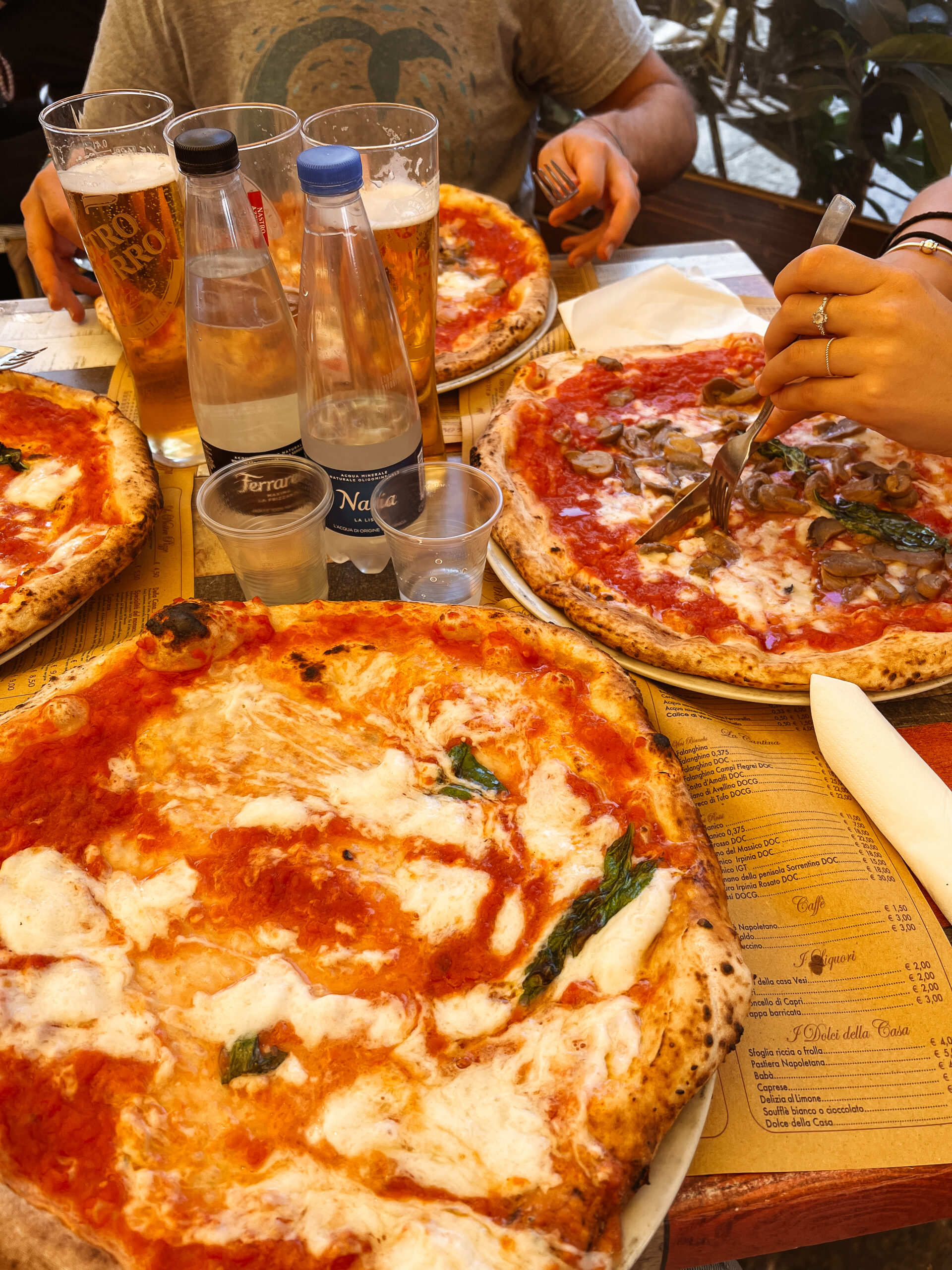
MENU STRUCTURE
The Italian menu is a work of art, and if you’re unfamiliar with it or with the language, it might take you a couple dining experiences to understand it. The most common menu layout is as follows:
Aperitivo – light pre-drinks, like Aperol spritz
Antipasti – appetizers like meats & cheeses, bruschetta, etc.
Primi piatti – first course, mostly pasta dishes
Secondi piatti – second course, mostly meats and large veggie dishes
Pizze – pizza, obviously
Contorni – side dishes like potatoes, veggies, etc.
Dolce – desserts
Caffe – coffees
Digestif – digestive liquors
Vino – wines, of course
You don’t have to eat every course, obviously (but if you’re super hungry, go for it!). Regardless of how many pizzas are offered, they will be in a separate section of the menu–never lumped in with first or second courses. Sometimes, there’s a separate section for seafood if the dishes are second-course-sized, but for seafood pastas, they’ll commonly be included in the primi piatti section. As mentioned before, you won’t find any large cuts of meat like chicken breasts on pastas. Ground meats like wild boar are popular if they’re local, and cured meats like bacon, pancetta, etc. are popular in things like carbonara and amatriciana–but other than that, large cuts of meat are saved for second courses.
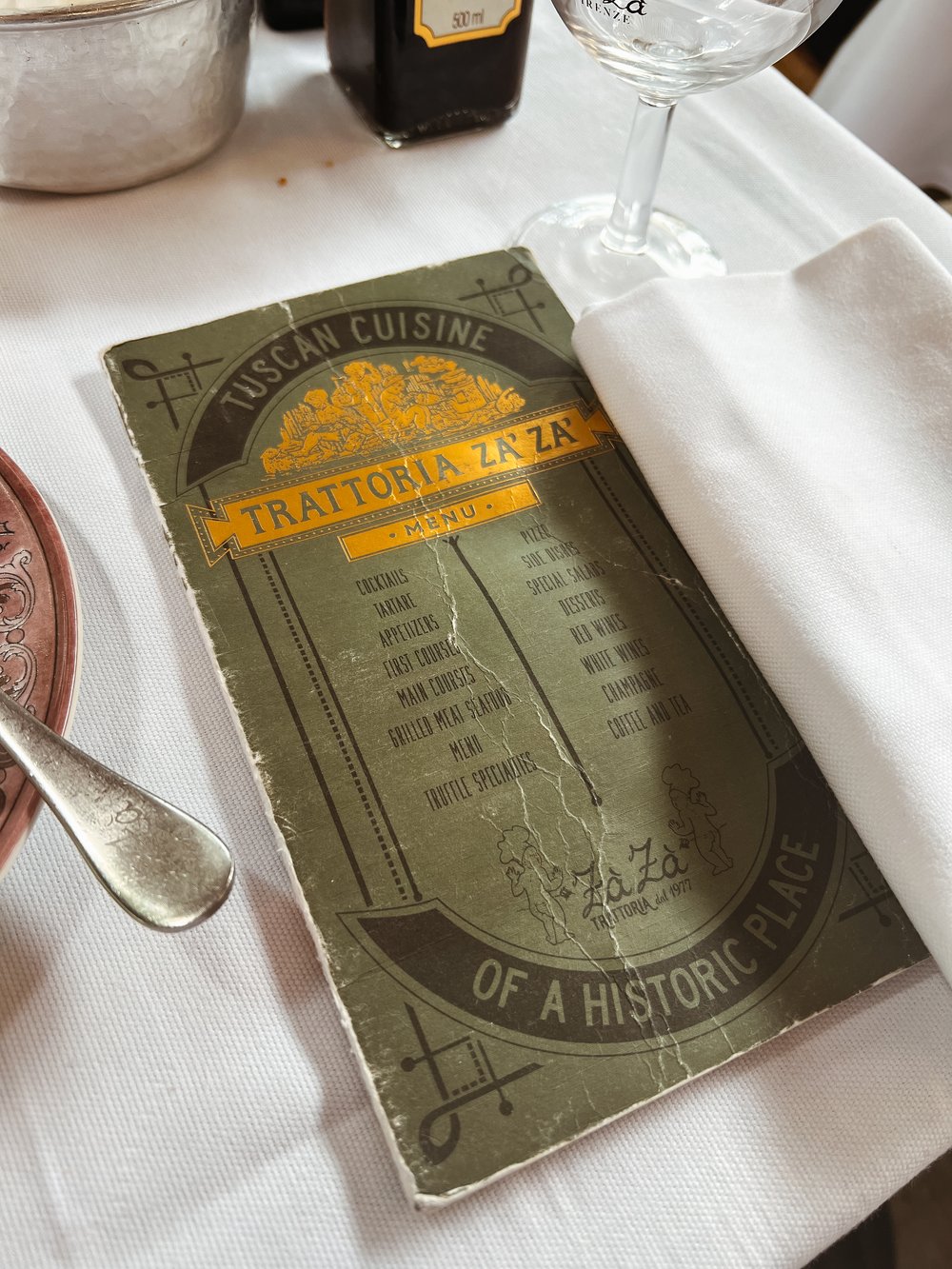
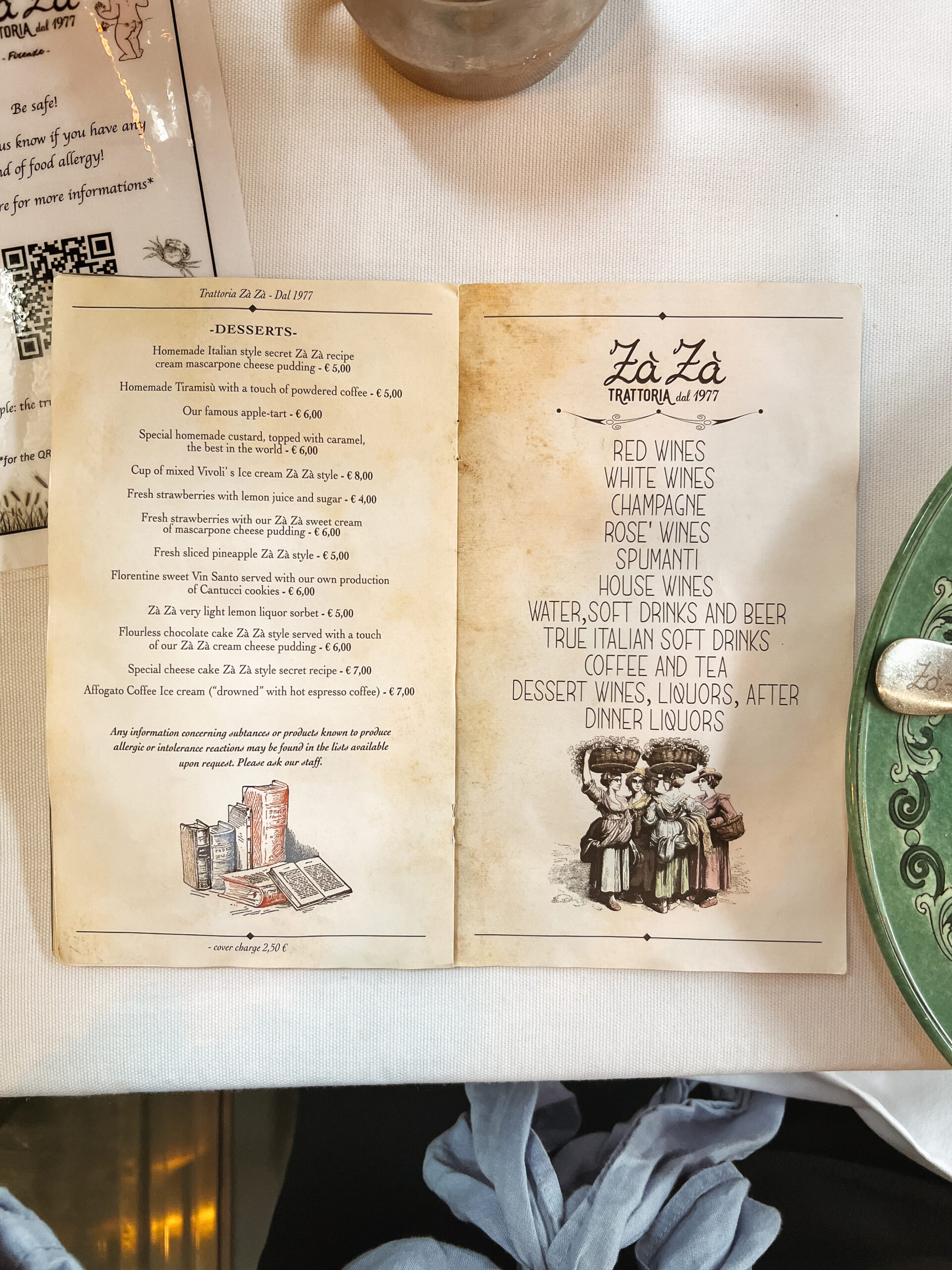
BREAKFAST (COLAZIONE)
Breakfast has been the hardest for me to get accustomed to while traveling through Italy. I very much prefer a sit-down, savory breakfast (I thrived in the UK with their full English), so getting used to breakfast culture in Italy has been odd. Your typical Italian bar (which just means coffee shop, not the kind you go to for cocktails) is the most common spot you’ll see for breakfast here–tiny shops on side streets with window counters filled with croissants and pastries, everyone standing around the bar with their cappuccinos and espressos–it’s an art, for sure, but when you come from a country that’s used to bacon and eggs for breakfast, it’s definitely a culture shock. You can still find some larger cafes where you can eat a heartier breakfast like omelettes, avocado toast, etc., but to get a big ol’ American breakfast, you’ll have to head to the touristy spots (which are fun in their own right, too!).
Some breakfast tips:
- If you’re at a bar, stand at the counter to drink your coffee–it’s cheaper than sitting down at a table.
- Get used to sweet breakfast–no one will look at you funny if you order that huge pistachio cream croissant at 9AM.
- If you want a big breakfast, look for some local artisan cafes–they’re getting more and more popular in large Italian cities, and you’ll probably be able to get an iced coffee, too.
- Don’t always knock the tourist traps–sometimes, you just want sausage and potatoes for breakfast, and that’s okay. Homesickness gets real out here!
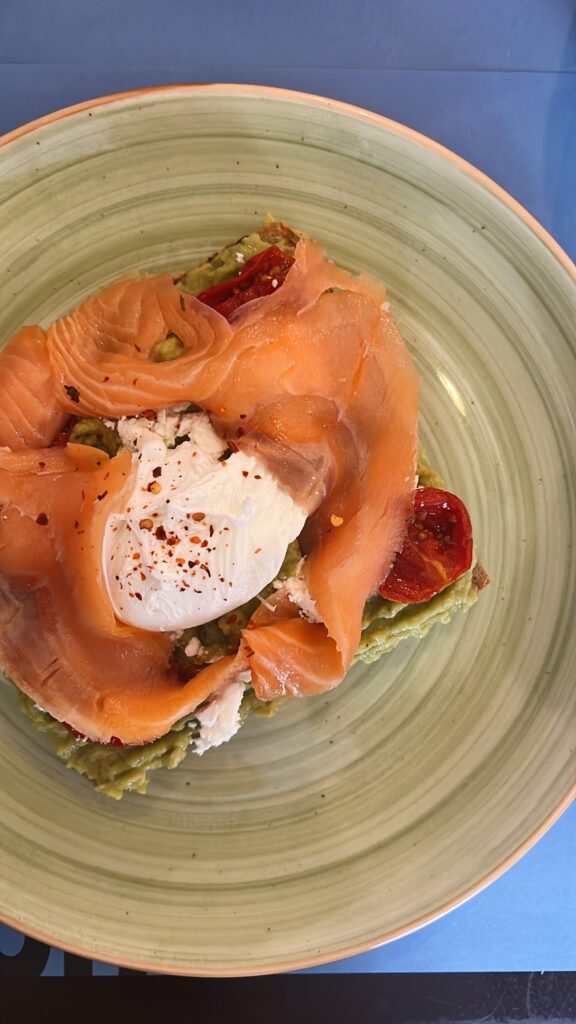
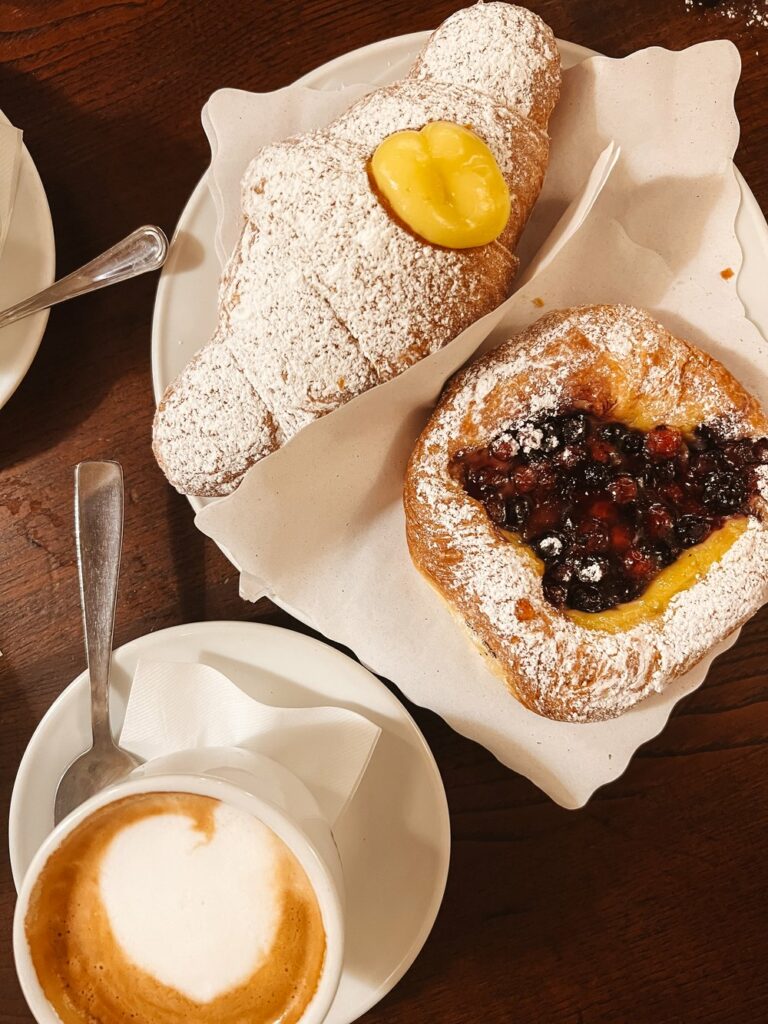
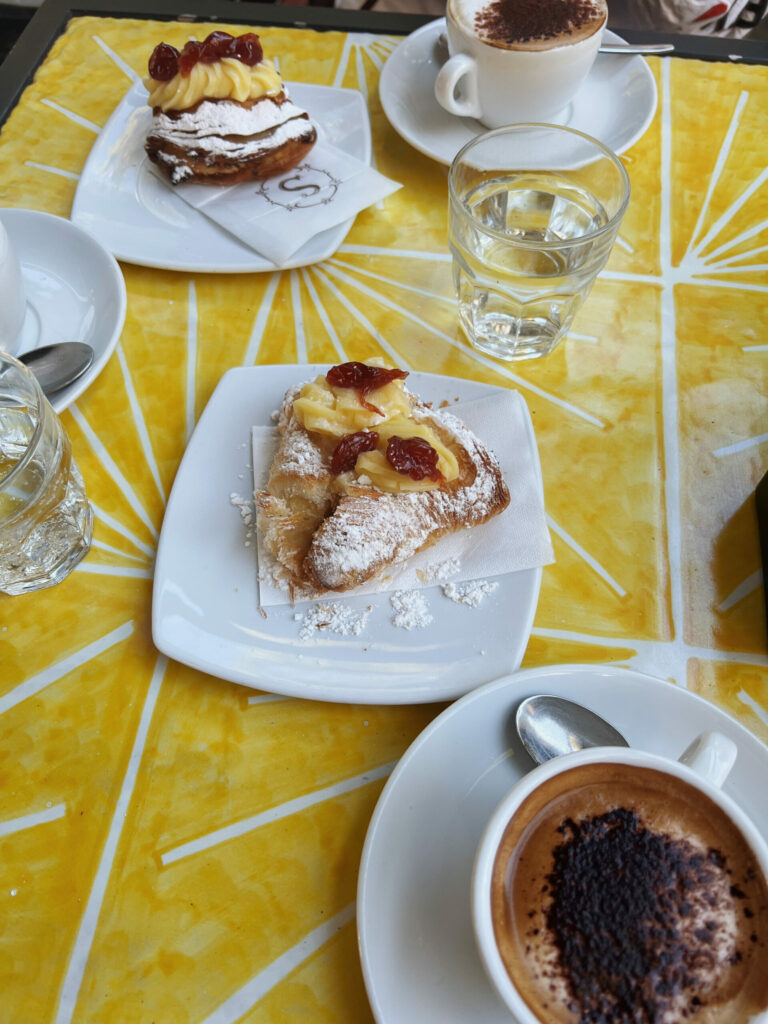
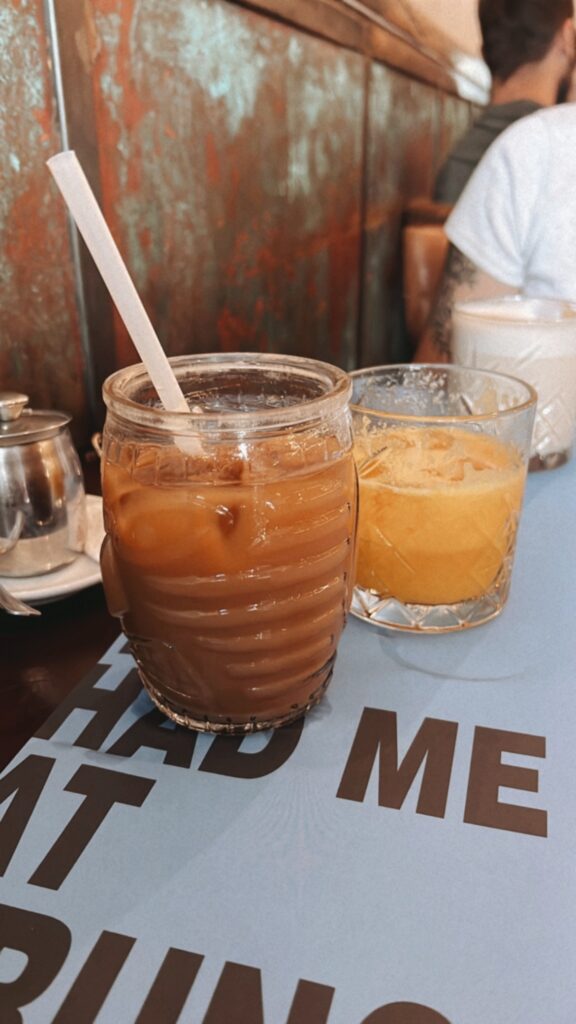
LUNCH (PRANZO)
The Italian pranzo is much more laid back than American lunch; in the States, you often see tons of people eating on the go, getting something super light, even eating at work or waiting until 3-4 to eat. In Italy, lunch is more of a celebration of leisure. Tons of restaurants close from around 3-7, giving staff the chance to spend time with their families or go out to eat themselves. If you’re out at a sit-down restaurant for lunch, you’re taking your time, spending hours relaxing, talking, eating, sipping on wine or spritzes, and just enjoying the downtime. People often stop working for a few hours for lunch, having a larger gap in their work day to account for the time they take at lunch. It’s similar to dinner as well, where people take their time and enjoy the environment at whatever restaurant they’re in.
As for quicker options, sandwich shops are a staple in any Italian town. People flock to popular spots, locals and tourists alike, because the Italian panino is one of the greatest foods known to man (that’s a fact, not an opinion). However, you’re still more likely to see locals sitting outside with a panino or focaccia during lunchtime rather than walking around while eating (that’s kind of a touristy thing to do, but I love it anyway!). Regardless of where you’re going, it’ll probably be most busy around 1-2pm, or at least that’s what I’ve noticed.
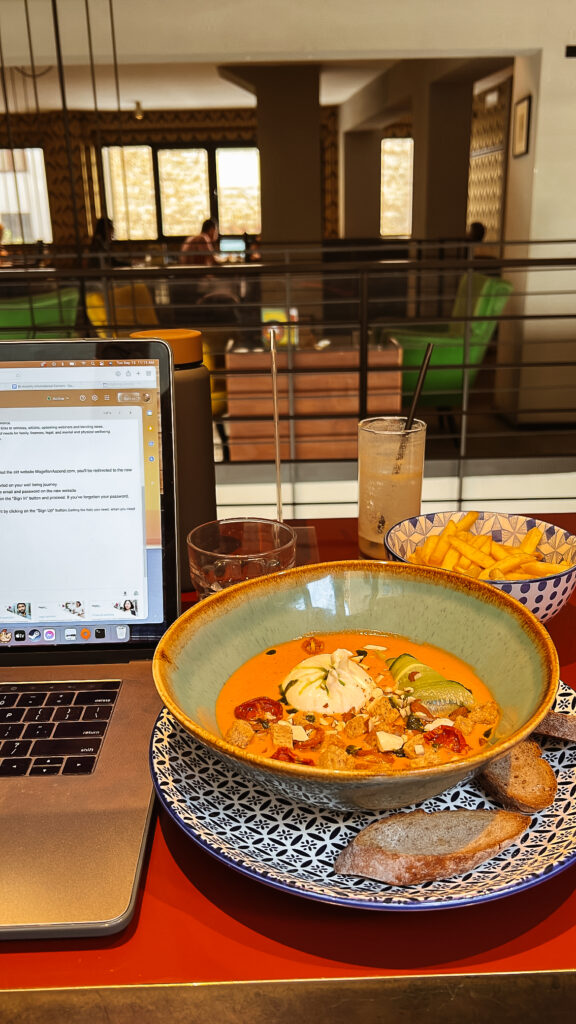
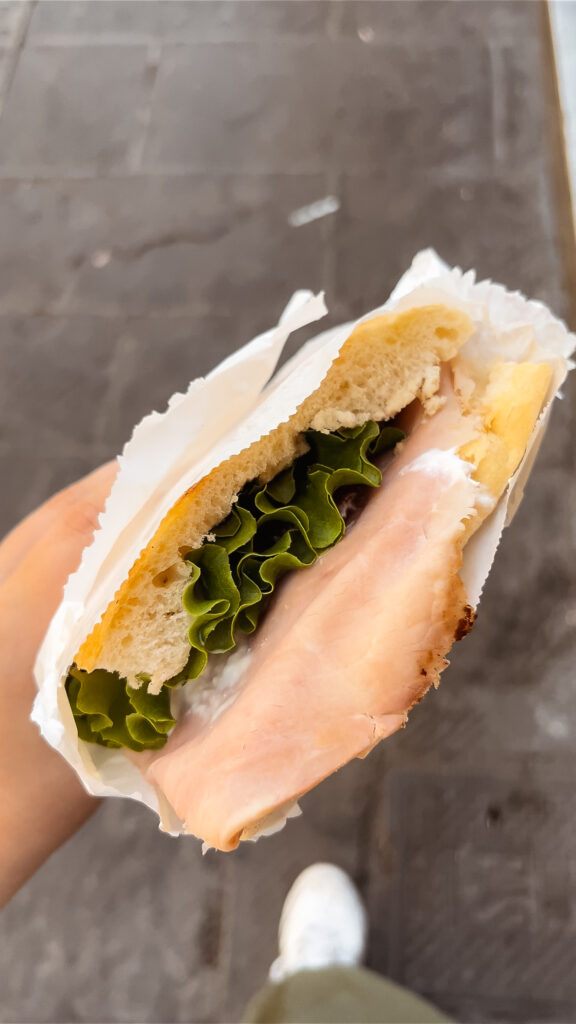
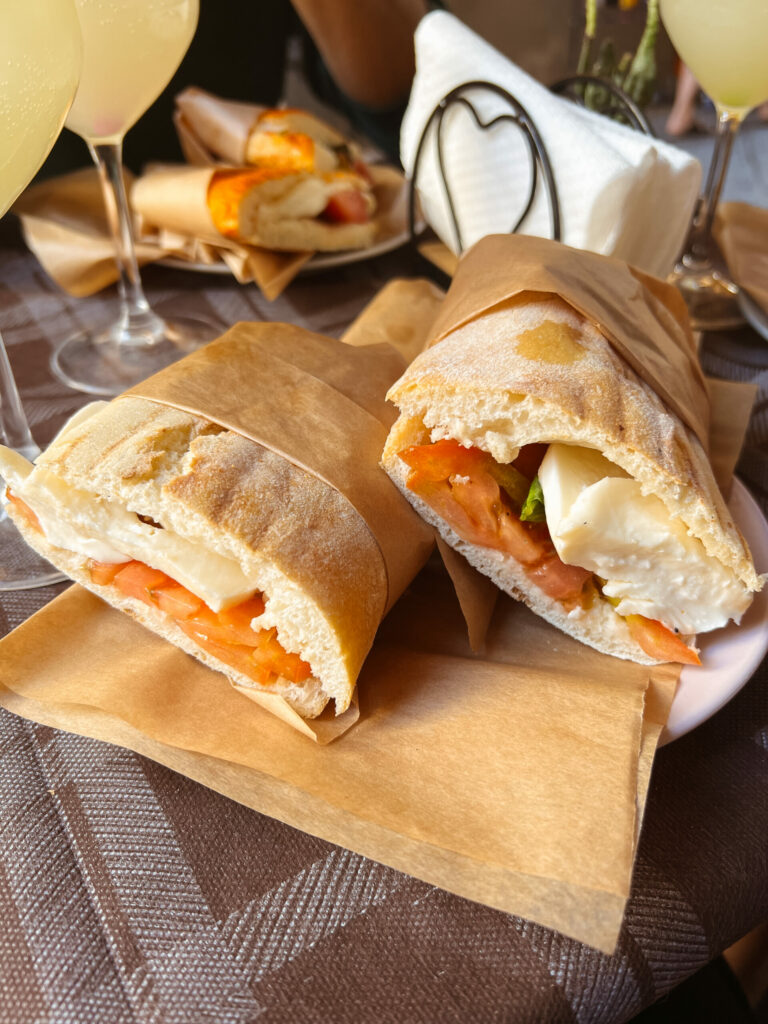
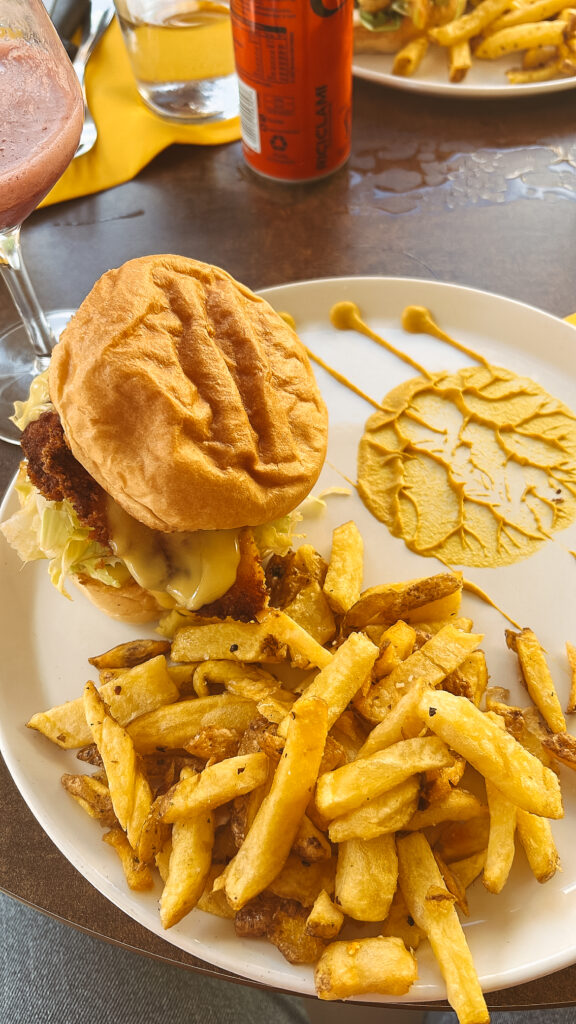
APERITIVO
Something I absolutely love about Italian dining culture is aperitivo: the pre-dinner drink hour. No matter where you are in Italy, when 5-6PM rolls around, you’ll start to see people crowding outdoor tables at restaurants and cafes, every single person with a spritz or a glass of wine in their hand. It’s the hour when people literally just prepare for their dinner with light drinks and antipasti, and it’s a sure sight to see on any given day of the week. We don’t really do that in the US; sure, sometimes we go out for just drinks and appetizers, but that ends up just being our meal when we aren’t super hungry. As a country, we don’t all congregate at the same time every day just to enjoy a relaxing couple of drinks with friends and family (though we could really take a note from the Italians on this one).
When you go out for aperitivo, 9 times out of 10 you’ll get some snacks with your drinks at no charge. Typically you’ll be served olives, potato chips, nuts, taralli (little crunchy bread snacks), or a mixture of some/all of those. If you’re at a legit restaurant that serves appetizers, this is the time to get a few and share them with your company. You can obviously still get appetizers at dinner, but it’s more fun to split them over drinks before you sit down for your actual meal!
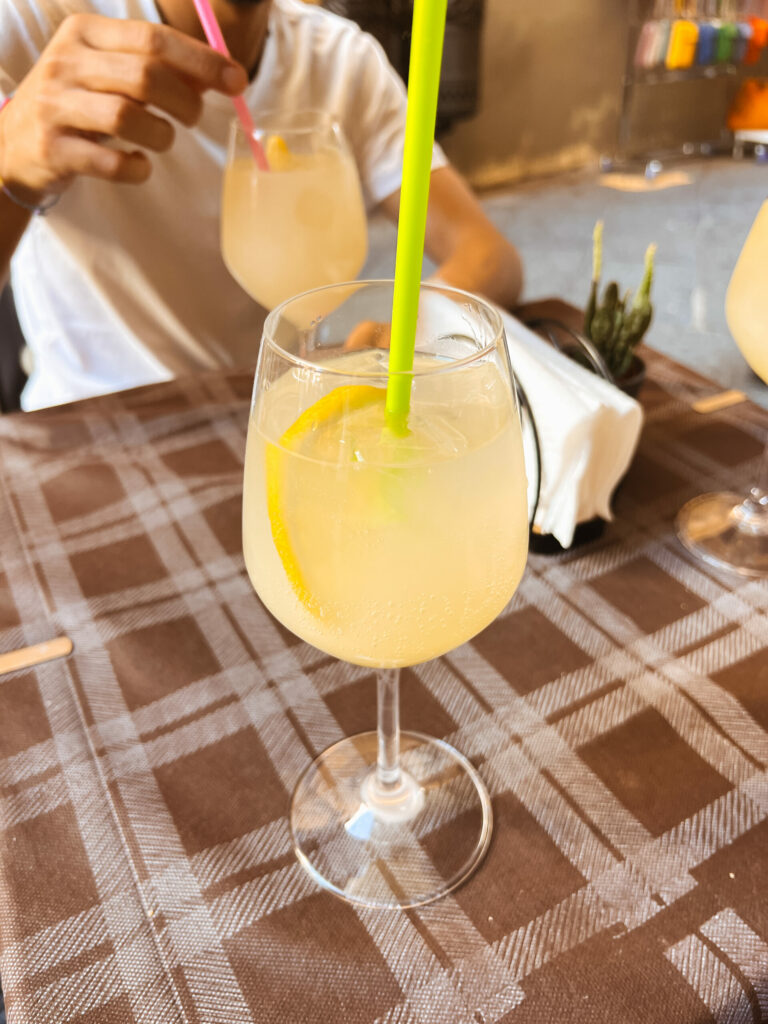
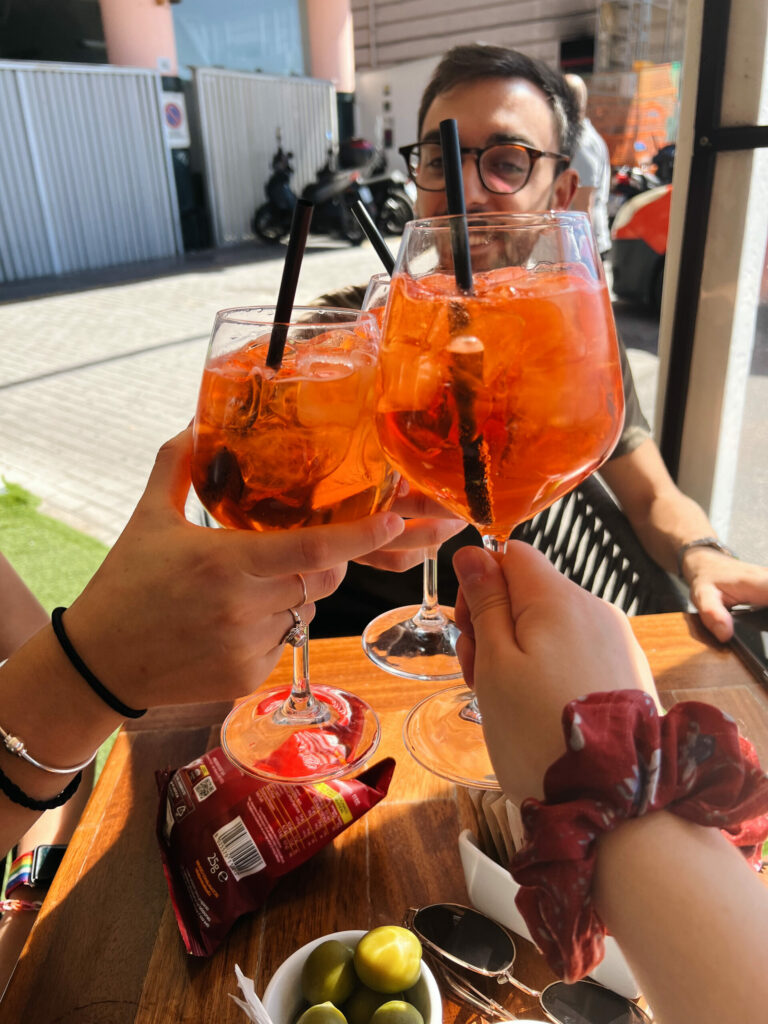
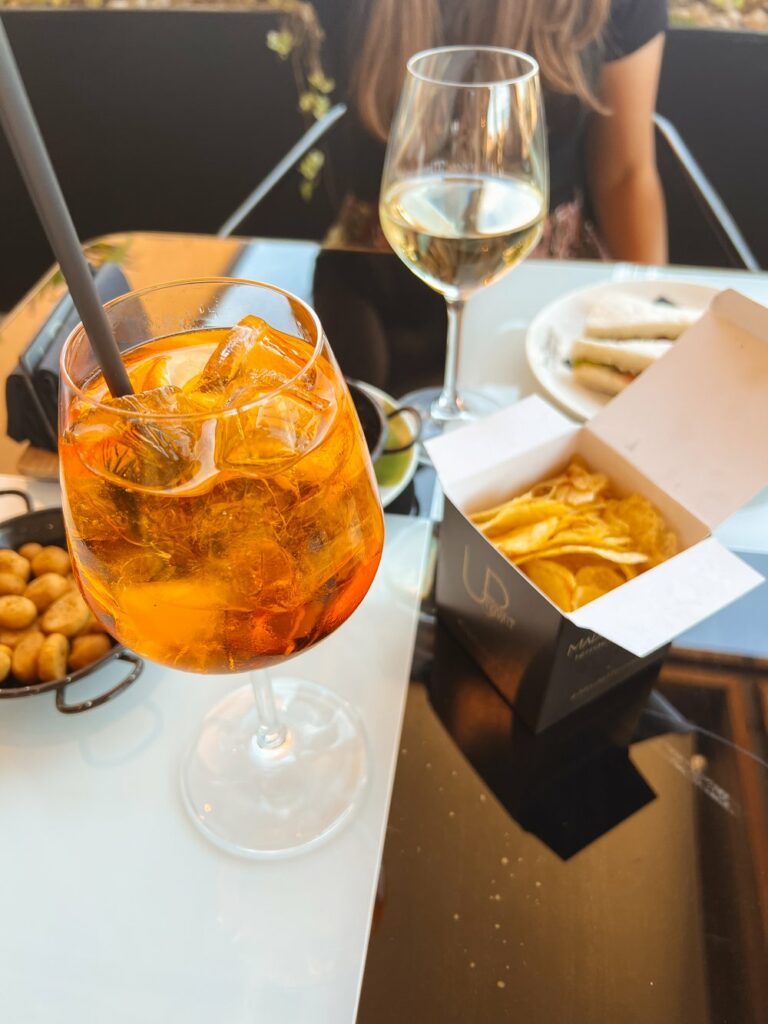
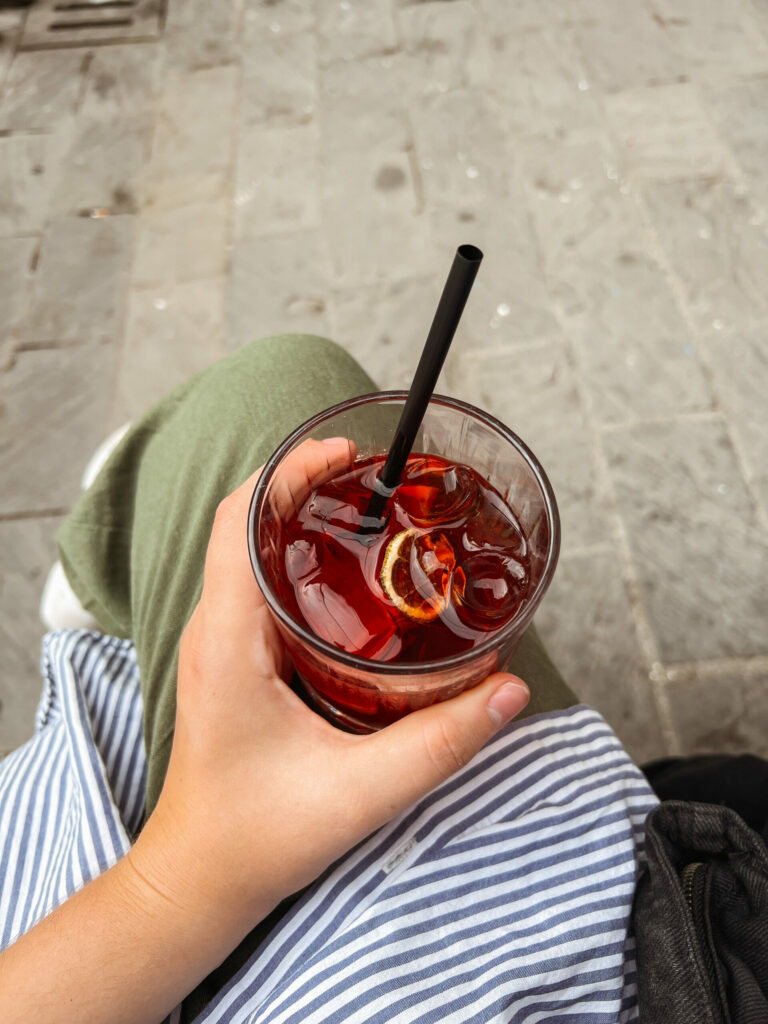
DINNER (CENA)
Ah, the Italian dinner. Cena starts late–usually around 8:00-8:30PM, and doesn’t end until the wee hours of the morning. Like I mentioned before, tons of restaurants don’t even open back up for the night until 7:30PM, so people aren’t even getting to the restaurant until after most Americans are already eating (or heading home). Also previously mentioned: make your reservations! It can’t hurt to make sure that you’ll have a seat, especially if there’s a certain restaurant you’ve been eyeing.
The most important thing to remember is to slow down and enjoy your meal. Italians savor dining out with good company; it’s not seen as a hassle or a waste of money or a time eater–it’s celebrated with long nights filled with good food and good wine. And trust me, the kids will be out just as late as everyone else, too! I can’t remember how many times we sat at our table until at least 11:30PM, tired AF and ready for bed, just to see ten year olds running around with more energy than we could handle even during the daytime. Dinner in Italy is a family affair, and bedtime seemingly doesn’t exist, so just prepare yourself for that.
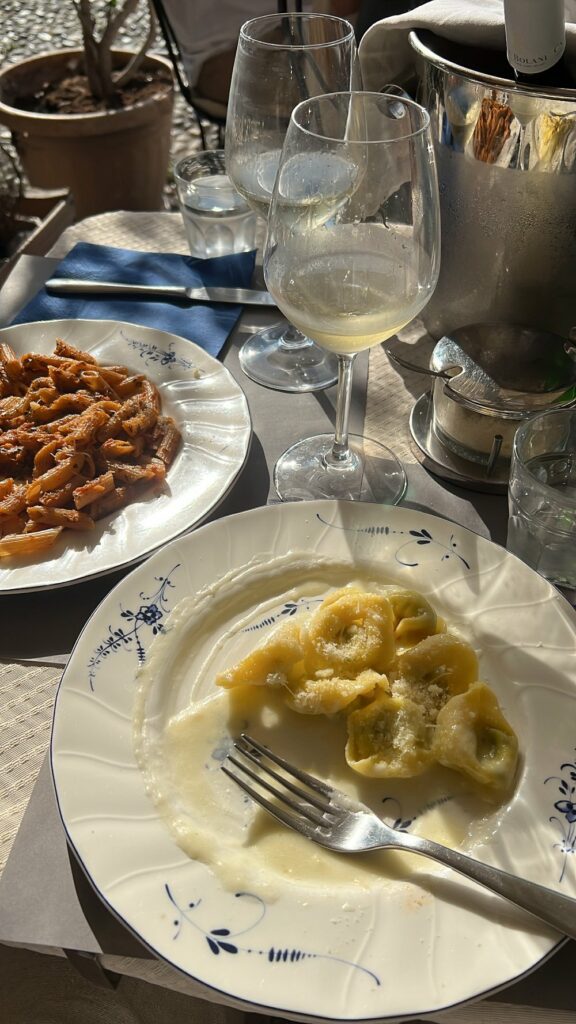
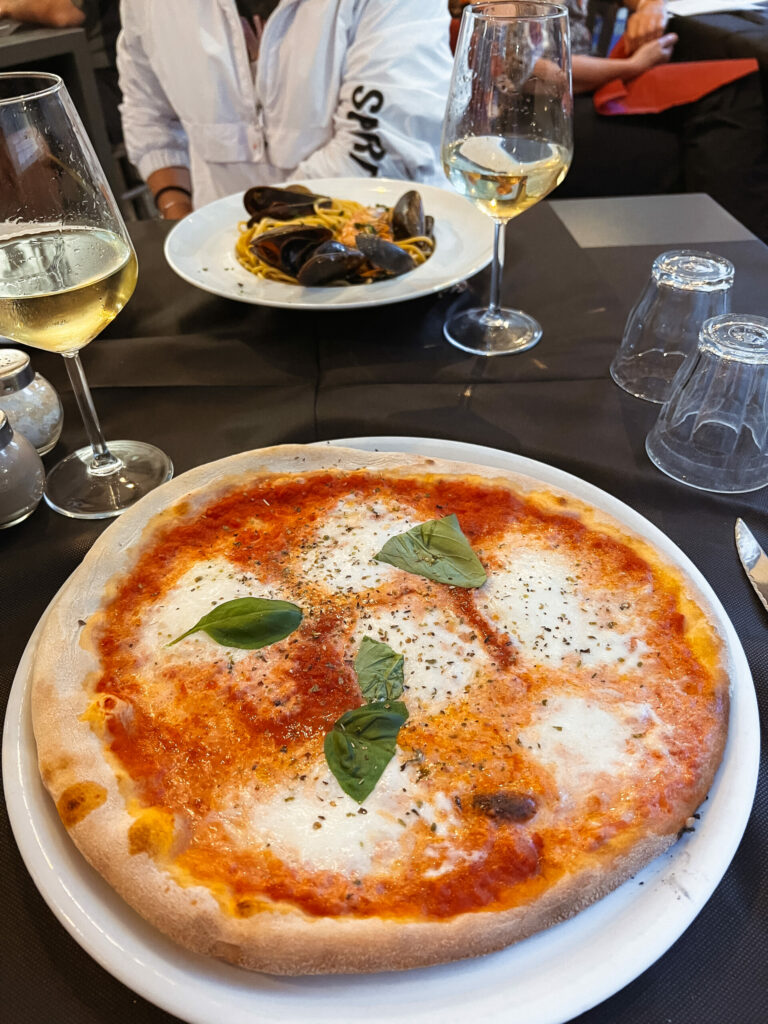
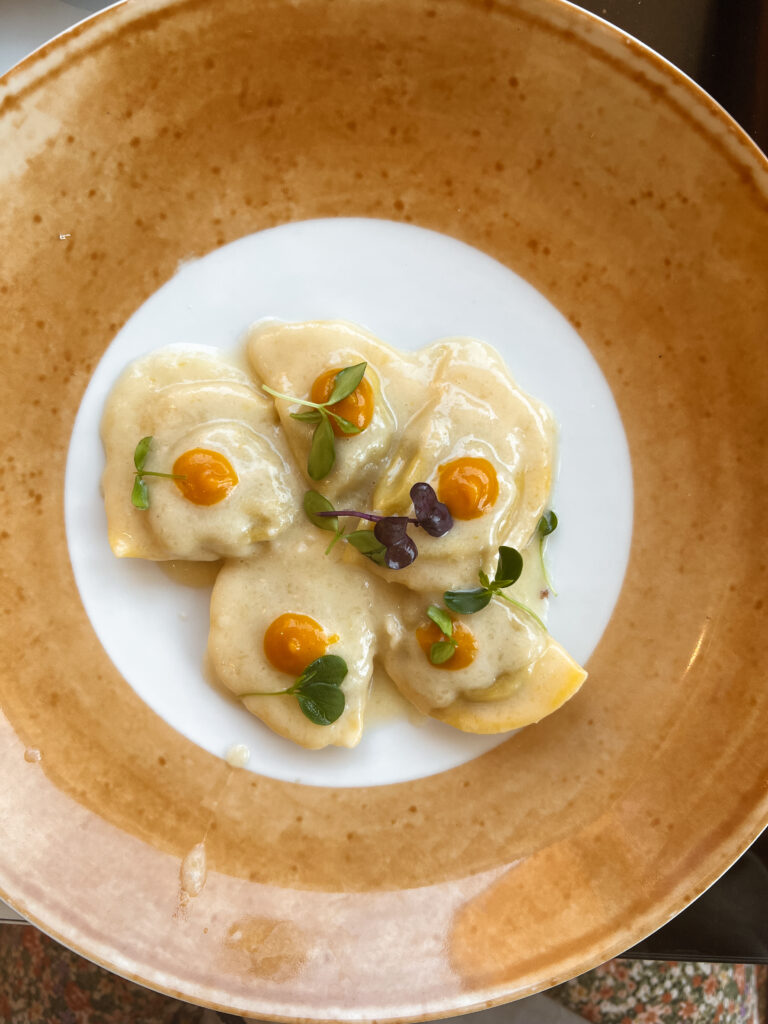
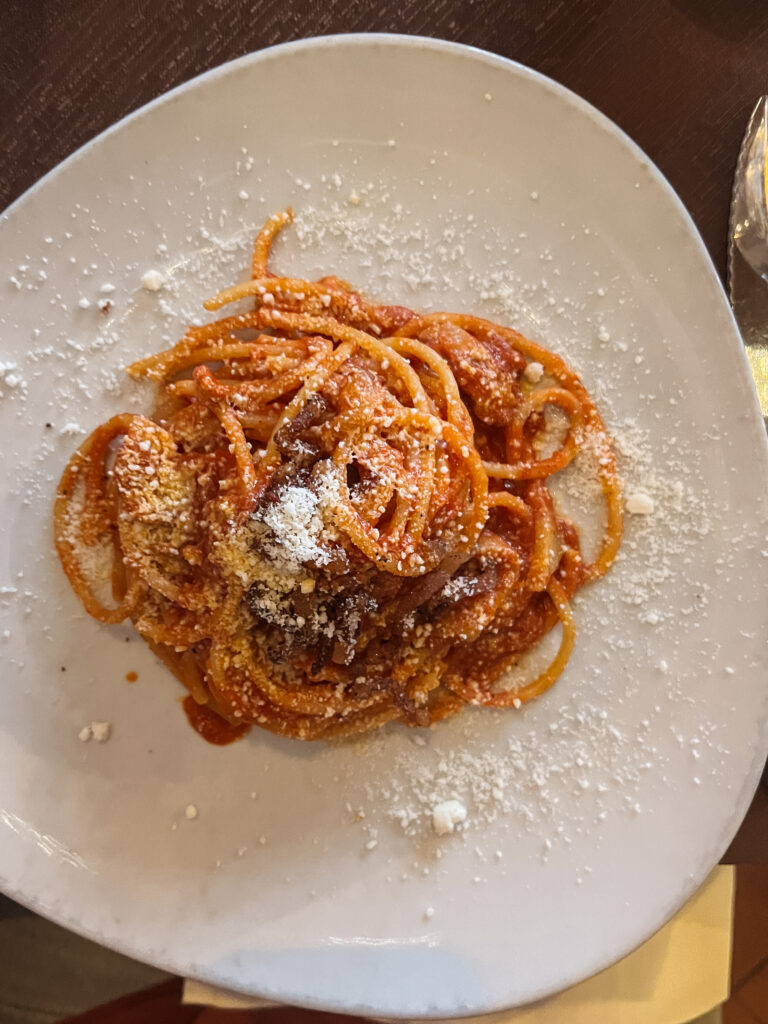
ETIQUETTE
Basic public etiquette rules always apply when you’re out to eat, regardless of whether you’re in the States or in Italy (or anywhere for that matter). Be polite, be aware of your surroundings, et cetera. But in Italy, something to get used to when dining out is learning to take your time. Your waiter won’t hound you every ten minutes like they do in the US, because customer service is seen very differently outside the States. Americans have to schmooze for their tips because they don’t make a living wage–customer service has to be impeccable for them to make decent money. In Italy (and most other countries), serving doesn’t equate to their livelihood, and customer service isn’t nearly as hands-on. Your waiter will take your order, bring it to you, and leave you alone until you ask for the bill. Yes, you’ll have to actively wave them down and ask them to bring you the check–and even after doing so, it’ll probably take a good ten minutes to get the actual bill. Get used to waiting around, and enjoying waiting around. You don’t need to be in a rush when you’re in Italy!
Another dining etiquette difference when in Italy is tipping: is it required? Is it expected? The answer to both is no, but it’s not frowned upon by any means. If you have great service, leaving a couple euro behind is much appreciated, though you don’t have to go overboard. Sometimes the service charge is already added to your bill, as well, so be sure to check before you pay so you aren’t surprised if your total is a little higher than expected.
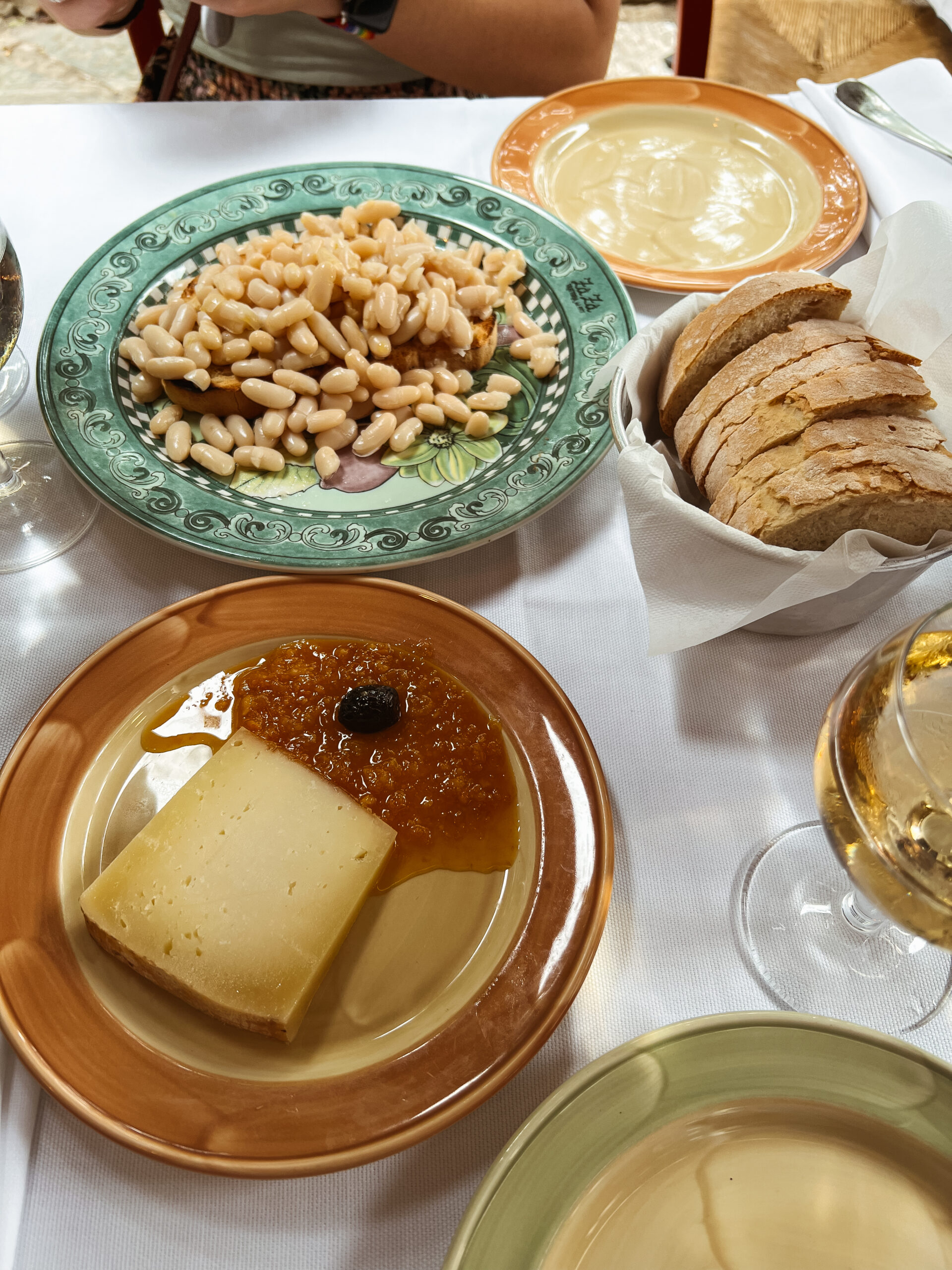

Arguably my favorite little piece of Italian culture is the act of “la scarpetta”, or “little shoe.” It’s the Italian term for when you soak up the pasta sauce on your plate with a piece of bread after your meal. At first I was nervous that doing so wasn’t common in Italy (what a moron, huh?), but I soon learned that not only is it common, it’s celebrated and encouraged! So use all that bread to soak up your pasta sauce–double points if you add olive oil and seasonings.
One last thing to note: those little shots you get at the end of your dinner. Please, for the love of all things good, don’t throw ‘em back like an actual shot! These are digestifs, a common after dinner drink to help you digest your food more pleasantly. They’re meant for sipping and enjoying slowly, rather than sucking down like we’re used to in the States. You can get normal shots at bars and clubs, of course, but if your server brings you shot glasses of something yellow (limoncello) or brown (amaro) after a meal, just say grazie and sip them slowly!
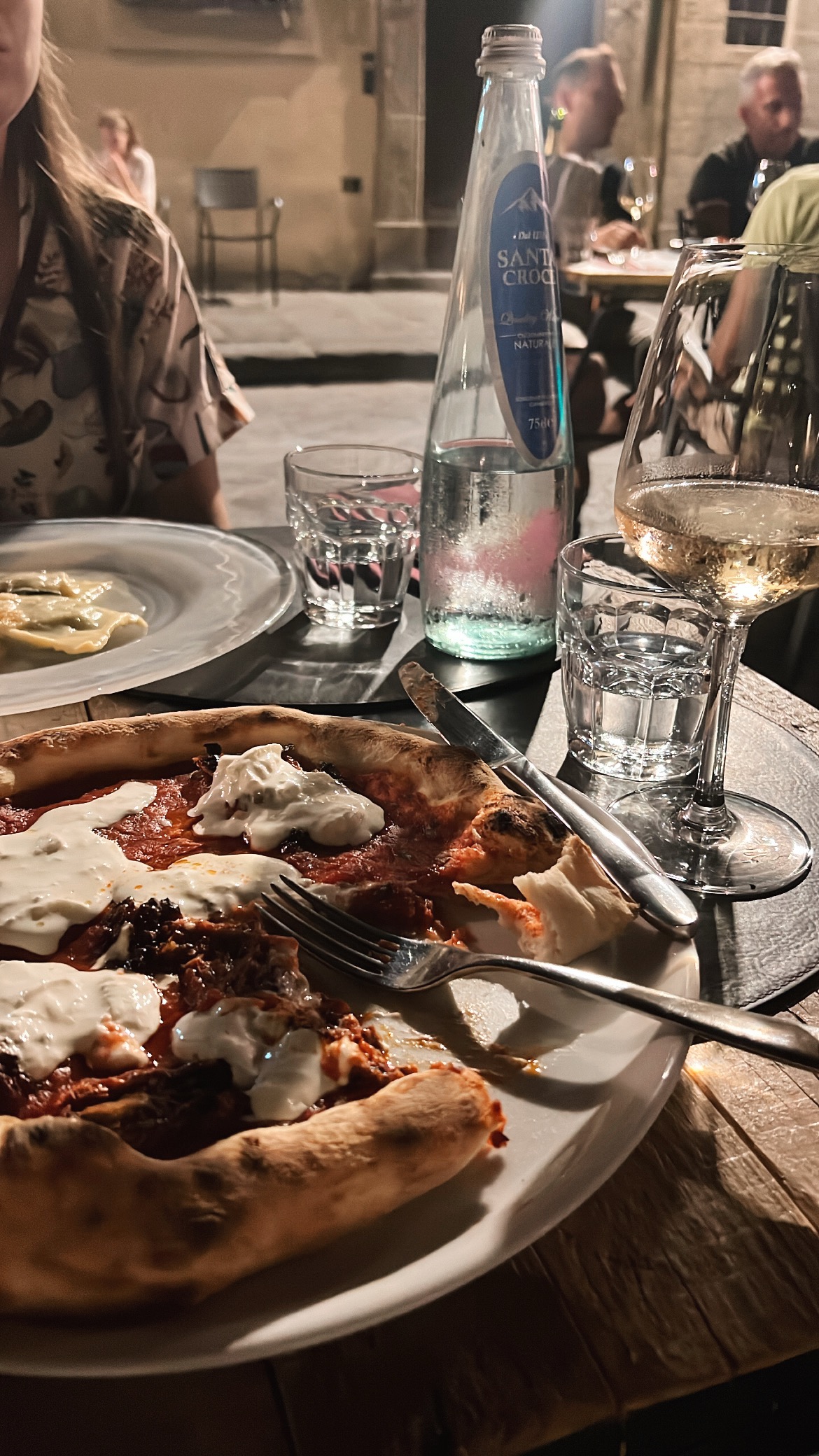
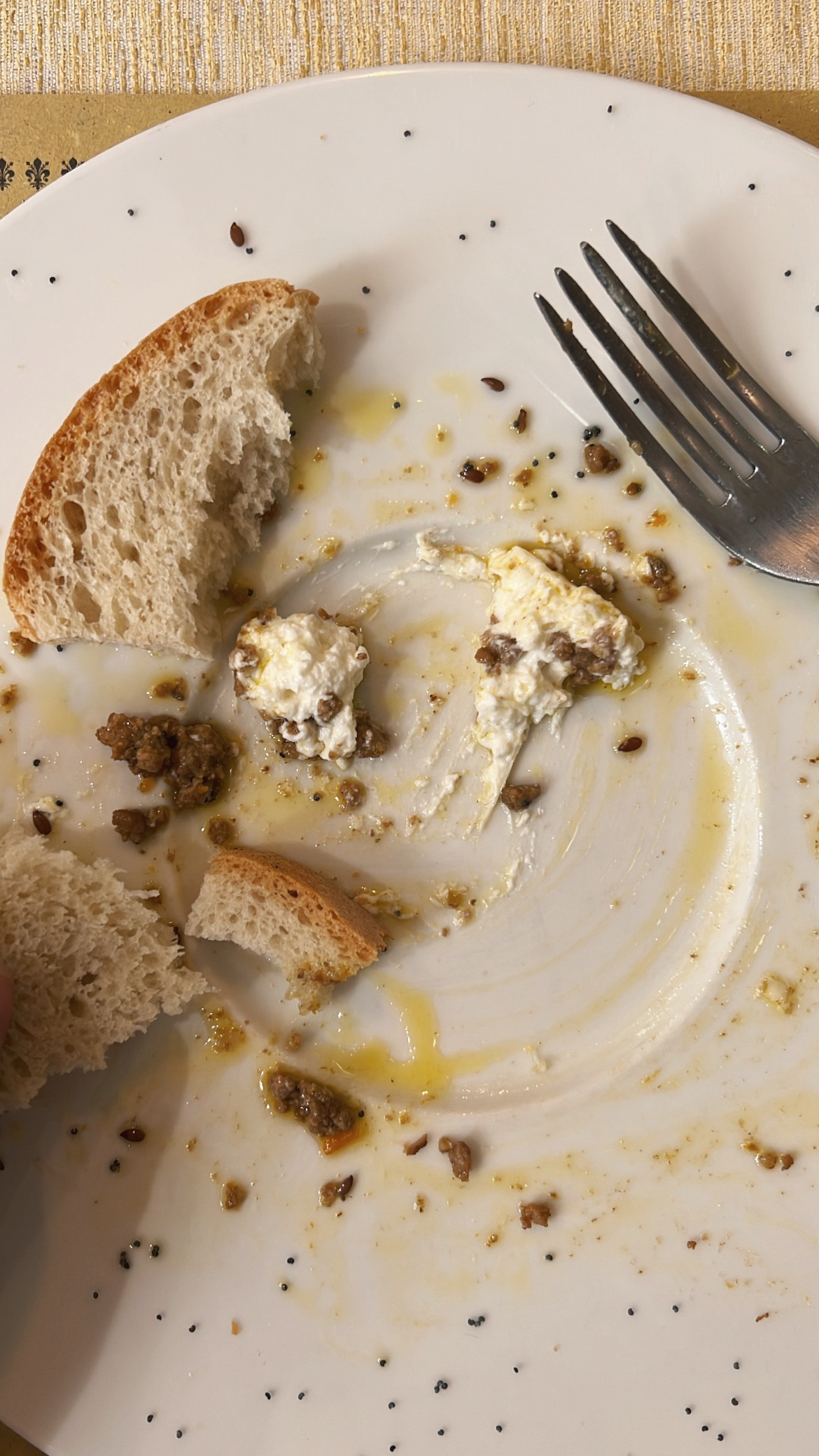
WHAT TO REMEMBER
To sum it all up, dining in Italy is something to celebrate and enjoy slowly. Take in the atmosphere, the music, the smells, the tastes, the company, and most importantly, take your time and relax! Learn basic greetings and phrases in Italian–it will make all the difference as a tourist, I promise. Make your reservations ahead of time, eat local foods and try different wines. You won’t find anything better than local recommendations at traditional restaurants. Embrace the Italian menu and dining style, and soak it all up!
————————
More Italy blog posts:
————————
FOLLOW ALONG
————————


